I don’t think the university maths department I work in has enough art in it. I have gazed covetously upon the walls of other departments I visit, covered with beautiful mathematically-inspired paintings and inspirational posters, serving as a backdrop to cabinets full of geometrical curiosities. I recently suggested to our Head of School that we could buy some art, and he said “That’s a good idea. Send me some suggestions.”
I was pretty delighted with that response, so I spent an enjoyable hour trawling the internet for art that would inspire and enrich our students and staff. We don’t really have anywhere obvious to put sculptures, so I wanted something you can hang on a wall. I had no idea how much money the Head of School was thinking of spending, so I assumed the worst and tried to stick to cheap posters and prints as a starting point. I wasn’t just looking for art – anything to decorate the walls, even if it ends up teaching the students something, is desirable.
My first port of call was my Arty Maths blog. I’ve been collecting nice bits of art that invoke or involve maths (and not art created purely to represent maths) for almost two years now. Unfortunately, it turns out I’ve almost exclusively been collecting sculptures and video works. That meant I had to do some googling!
Because I found some nice things, and in case anyone else is tasked with decorating a maths department and needs ideas, here’s what I found:
Some chaps in America have produced “Modern Nomograms”: charts for quickly doing Bayesian calculations. I’ve always thought they look nice, but I leave it up to the statisticians to judge whether they’re worthwhile from a statistical perspective. The big poster is $25 plus shipping.
Simon C Page is a mathematician turned graphic designer. His geometric prints are very nice. 16″x24” posters are £40.
Brent Yorgey produced these factorisation diagrams a few months ago. They’re quite pretty, they take a while to understand, and he’s shared the code used to make them so we can make posters as big as we like. He mentioned on his blog that he was looking into having proper posters made up, so I’ve emailed him to ask if that ever happened.
Johnny Lin keeps a list of links to mathematical posters on his website. I’ve collected the best ones below.
The Beauty of Mathematics Poster Collection offers a few sets of posters on geometrical topics lying just on the threshold of being interesting. I think the undergrads might like them, but I don’t like the graphic design. £30 for a set of five laminated A2 posters on a single topic.
Peter Jipsen has a few freely-available PDFs of posters on his site. I particularly like the series expansions of $e$ and $\ln 2$. The rest are basically just Beamer slides.
Ivan Andrus has made this fantastic periodic table of the finite simple groups. I think it’s a lovely idea with a decent execution, and the classification of the finite simple groups is the longest proof in history, so I reckon it’s worth commemorating.
I found this company selling prints of decimal representations of the biggest Mersenne primes. They seem to have stopped in 2008; I’m not sure if they just lost interest or realised the primes were getting too big to print at any size. Anyway, I think walking past a ridiculously long prime every day would make people smile. An unframed print is $99 plus shipping.
There’s a site selling rather light-hearted posters of mathematicians. I think quite a few maths departments have copies of these, so we might want to buck the trend, but they’re quite nice designs, if a bit garish. I might email them and ask if they’re planning on doing any more women – Ada Lovelace on her own is a bit of a poor show! Each poster $30.
The Bridges conference is an annual gathering of people working on the connections between maths and art. I had a look through last year’s exhibits, and John Higli and Markus Rissanen stood out. I don’t know how easy it would be to obtain pieces from them, though.
Edmund Harriss does lots of work on connecting art and maths, and could be commissioned to do something if we had more than a poster’s worth of cash. He knows a lot about geometry.
More please!
Now that I’ve compiled this post I can see that I mainly found things which were more educational than aesthetically pleasing. There’s plenty of lovely maths art out there – see the Bridges conference’s enormous collection of exhibits – but it seems the artists either aren’t interested in selling prints, or don’t make it easy to find out that they do. That’s a shame, because there seems to be a big gap in the market between the garish no-design educational posters and beautiful but expensive commissioned pieces.
So, if you’re a mathematical artist who either already sells prints of your work or could be convinced to, please send me an email. Or if you’re not an artist but have a recommendation for something I’ve missed, please post a link in the comments.

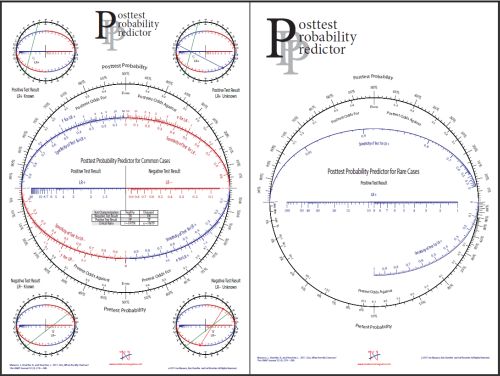
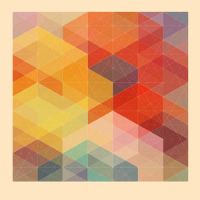


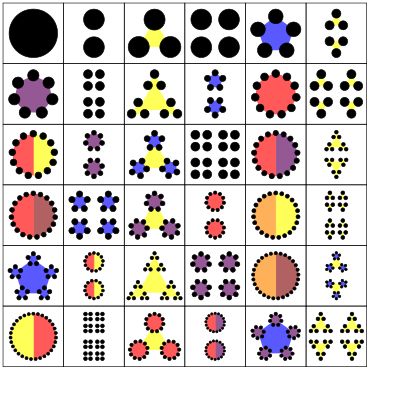
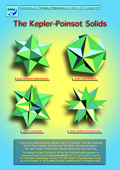
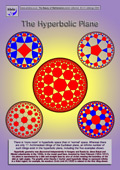
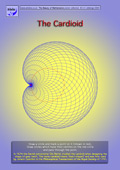

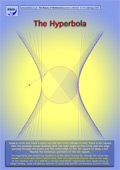
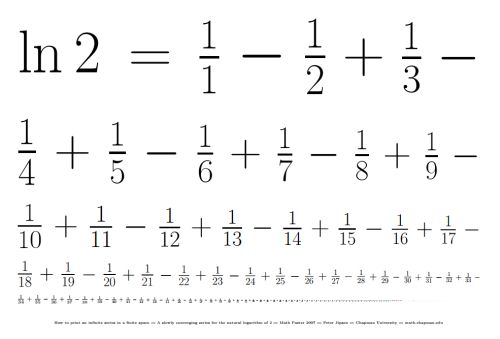
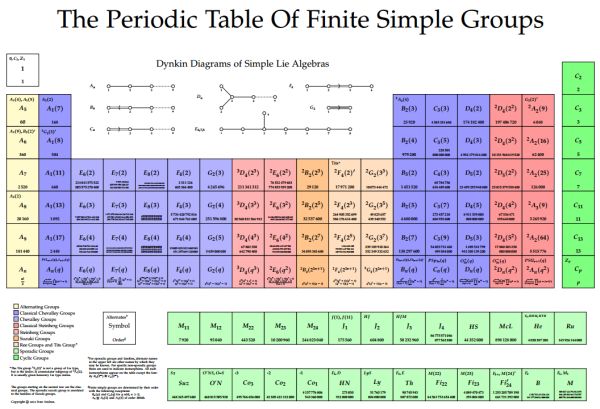
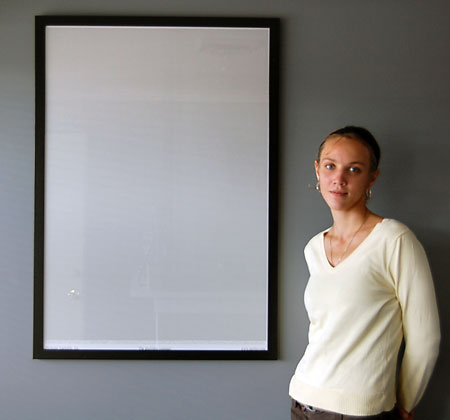

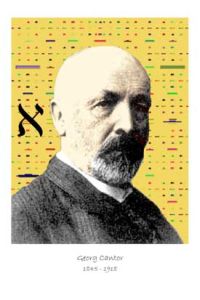



Be sure to check out some of Paul Salomon’s work. He’s a math teacher at St. Ann’s in Brooklyn, and he’s created some amazing works of art, some of which are for sale.
Thanks. I’m aware of Paul and can’t think why I omitted him. I definitely had his site open while writing the post. Oh well!
Have a look at Radmilla Sazdanovic’s work. We were thrilled to have it on temporary exhibiton in ICMS last summer.
http://www.math.upenn.edu/~radmilas/mathart.html
John Golden reminded me of Tilman, who does the superb Geometry Daily blog. He sells silkscreen prints for €29 each and on-demand digital prints for \$20 each.
I was going to suggest Geometry Daily, but I see you’re on it. Also the math department at Wesleyan University in Connecticut has an interesting piece drawn onto a wall in their lounge. It’s just called “1000 lines” or something like that. It’s a big rectangle with lots of line segments drawn between sides in pen or pencil, and it looks cool. I don’t know who the artist was, but I could imagine that with proper planning and supervision, a math club could make something similar.
The artists who did the line drawing was Sol LeWitt, or at least it was made based on his specifications. (He probably didn’t draw it himself.) He died in 2007, but a similar concept could be used.
You may want to browse through http://www.isama.org/ and check out their many links, some of which are dead. One is http://hermay.org/jconstant/ A4 print $90
http://www.patterninislamicart.com/ has wonderful tiling. There does not seem to be specific posters but the owner of the site says the photos are available. While not completely art http://www.its.caltech.edu/~atomic/snowcrystals/snowstore/snowstore.htm has prints of snowflakes which are good.
Also consider looking at http://www.zazzle.com/ or http://www.deviantart.com/ and search for words such as fractal, tiling or mathematica. select prints and see the price. Educational printable http://www.math.toronto.edu/~drorbn/Gallery/Symmetry/Tilings/Sanderson/index.html Humourous printable http://xkcd.com/552/
Outside my office at Birmingham was the poster that mathematicianspictures.com calls “The Mathematicians”, which is 4×4 grid of some of the other posters. That might be an option if you like the idea but don’t want to waste the wall space on a whole bunch.
Clifford Pickover tweeted a link to this neatly presented poster of 36 “Math Gems”.
You might want to check out:
http://www.barbecuejoe.com/BC%20solutions.htm
This is a nice display of Bill Cutler’s 536 distinct solutions to the Stomachion, a 2200 year-old puzzle pondered by Archimedes and solved by Bill at my instigation in 2003. You can learn more about the Stomachion by following the links backward from this page.
By the way, I am one of the three amigos behind modernnomograms.com.
Thanks. That’s an interesting diagram.
Are you planning on doing any more nomograms?
Of course. For the time being, you might start by checking out the ones on this page:
http://www.barbecuejoe.com/scan.htm
The Growth and Productivity nomogram shown here
http://www.barbecuejoe.com/scan.htm#Six
is original work that is different from most run-of-the mill nomograms.
I hope you enjoy this page.
Hi take a look at the Gematria inspired work of Tobia Rava, inspirational! http://www.tobiarava.com/ best wishes,
Great stuff – My wife and I are looking for math related wall art for our baby that’s on the way.
Any other recommendations ?
I agree – math departments should be full of art! I’ve been doing abstract watercolor paintings based on simple stochastic processes – lots of random walks on irregular grids, with colors sampled following a Poisson distribution. You can find a gallery at my website (danielmwatkins.com) and at my Tumblr page, thatsnotmath.tumblr.com.
Printable math posters, $2 each
mathposters.net